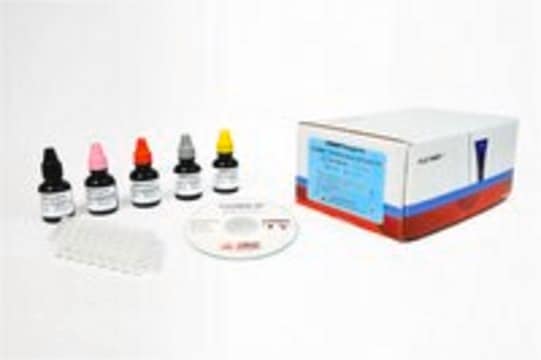To use the 96 well plate, utilize well F12 on the probe height adjustment tool (CN-0298-01). For the 384 well mag plate, which is used in the Human High Sensitivity 384 well kit, use well B7.
40-014
FLEXMAP 3D® System
The FLEXMAP 3D system makes it possible to multiplex up to 500 analytes through the combination of differentially dyed fluorescent microsphere sets & an innovative instrument design.
Synonym(s):
3D System, FLEXMAP 3D
About This Item
Recommended Products
Quality Level
manufacturer/tradename
Milliplex®
technique(s)
multiplexing: suitable
detection method
fluorometric
General description
Application
Legal Information
Disclaimer
Certificates of Analysis (COA)
Search for Certificates of Analysis (COA) by entering the products Lot/Batch Number. Lot and Batch Numbers can be found on a product’s label following the words ‘Lot’ or ‘Batch’.
Already Own This Product?
Find documentation for the products that you have recently purchased in the Document Library.
-
Could you provide details on which wells to use on the FM3D probe height adjustment tool for the 384 and 96-well plates utilized in the Milliplex kits?
1 answer-
Helpful?
-
-
I am planning to create a new xPonent protocol template for my assay using a Cytokine Milliplex kit. Which analysis settings do you recommend: Fit of all standards or Mean of replicates?
1 answer-
We generally use the Mean of Replicates method, although Luminex prefers the Fit of All Standards approach.
Ultimately, the choice between the two methods is left to the researcher to determine the best option for their SOP. Importantly, this choice does not significantly impact sample results.
Here's a brief overview of the two methods:
Fit of all standards: This method determines the standard curve by using each individual standard replicate when calculating the standard curve. For instance, if duplicates of a 7-point standard curve are run, the software will calculate the standard curve using 14 points. This method applies only to quantitative analysis.
Mean of replicates: This method involves averaging the individual standard replicates when calculating the standard curve. Similarly, this method applies only to quantitative analysis. For instance, if duplicates of a 7-point standard curve are run, the software will calculate the standard curve using 7 averaged points.Helpful?
-
Active Filters
Our team of scientists has experience in all areas of research including Life Science, Material Science, Chemical Synthesis, Chromatography, Analytical and many others.
Contact Technical Service






